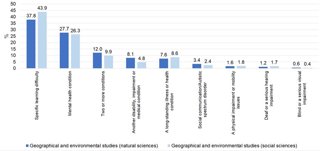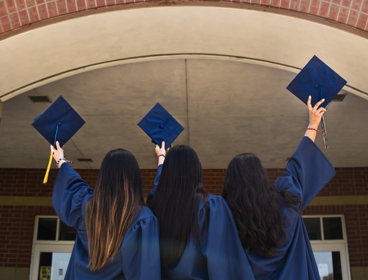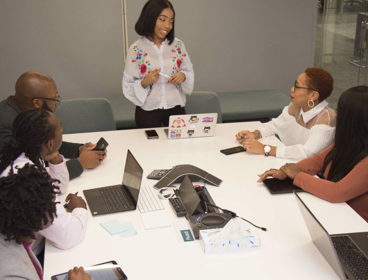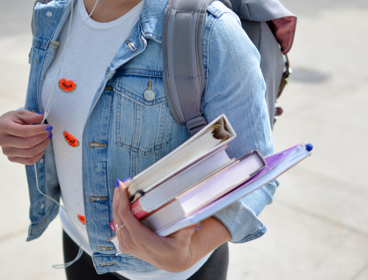This page contains a collection of equality, diversity and inclusion (EDI) resources with relevance to disability. These resources were collated as part of the project, Enabling equitable cultures of knowledge and practice in physical geography and environmental sciences, funded by the Natural Environment Research Council (NERC). Find out more about the project.
This page is dynamic; if you know of other relevant resources or wish to submit your own case study, we’d like to hear from you at rhed@rgs.org
The Society does not accept responsibility for the content of the external sites. Inclusion on this list does not equate to an endorsement of any content or organisation. Please contact the external site for questions regarding individual resources.
Contextual data
In 2019/20 there were around 35,025 geography students in the UK (undergraduate and postgraduate), 5,835 of whom (16.7%) reported a disability. Of these, mental health conditions and specific learning difficulties were the most commonly reported impairment types (see below). The proportion of first degree undergraduate geography students with a disability achieving a First Class or 2:1 degree was 87.8% and 93.6% (natural science and social sciences respectively). This corresponds to figures of 88.3% and 93.3% for non-disabled students.

Disabled students by subject area and impairment type (Data source: AdvanceHE)
Reports, guidance and toolkits
Beyond the bare minimum: Are universities and colleges doing enough for disabled students?
Office for Students (UK)
Disabled students are now a vital and significant part of campus life. However, challenges remain. Disabled students are less likely to continue their degrees, graduate with a good degree, and progress onto a highly skilled job or further study. This Insight brief asks what universities and colleges are doing to rectify these problems. What can the data tell us about the extent of these access and participation gaps? Are teaching and learning practices inclusive enough? Are funding changes exacerbating the difficulties that disabled students face?
Invisible Disabilities in Education and Employment
This UK Parliament POSTnote provides an overview of invisible disability in the UK. It outlines types of invisible disabilities and relevant legislation and policy. It also discusses the experiences of adults with invisible disabilities, and strategies aimed at increasing access and inclusion for adults with invisible disabilities, focusing on employment, and higher and further education.
APPG Diversity and Inclusion in STEM, Inquiry in Equity in STEM Education: Final Report
British Science Association (UK)
The All-Party Parliamentary Group on Diversity and Inclusion (D&I) in STEM aims to promote the inclusion and progression of people from diverse backgrounds in STEM, and to encourage government, parliamentarians, academics, businesses and other stakeholders to work towards a STEM sector that is representative of the population.
ASSET 2016: experiences of gender equality in STEMM academia and their intersections with ethnicity, sexual orientation, disability and age
Equality Change Unit (UK)
ASSET 2016 provides new insight as it includes an in-depth examination of how gender differences vary across individual academic disciplines and subpopulations (eg for respondents with or without caring responsibilities). This approach and the addition of qualitative analyses allows ASSET 2016 to paint a more detailed picture of the current state of gender equality in STEMM academia.
Advancing equity, diversity and inclusivity in the environmental sciences. Collaborative Inclusivity Roundtable Series: Summary report
NERC (UK)
The aim of the Collaborative Inclusivity roundtable series was to create a shared space to value lived experience. It aims to share best practice, and identify actions to overcome barriers.
Selected readings
- Atchison, C. and Libarkin, J.C. (2014) How accessible are the geosciences? A study of professionally held perceptions and what they mean for the future of geoscience workforce development. American Geophysical Union, Fall Meeting 2014, abstract #ED31I-01. San Francisco, USA
- Carabajal, I.G., Marshall, A.M., and Atchison, C.L. (2017). A synthesis of instructional strategies in geoscience education literature that address barriers to inclusion for students with disabilities. Journal of Geoscience Education, 65(4), pp. 531–541
- Chouinard, V. (1997) Editorial: making space for disabling differences: challenging ableist geographies. Environment and Planning D. Society and Space, 15, pp. 2–6
- Horton, J. and Tucker, F. (2014) Disabilities in academic workplaces: experiences of human and physical geographers. Transactions of the Institute of British Geographers, 39, pp. 76-89
- Imrie R, Edwards C. (2007) The Geographies of Disability: Reflections on the Development of a Sub‐Discipline. Geography Compass 1(3), pp.623-40.
- Mol, L. and Atchison, C. (2019) Image is everything: educator awareness of perceived barriers for students with physical disabilities in geoscience degree programs. Journal of Geography in Higher Education, 43:4, pp. 544-567, DOI: 10.1080/03098265.2019.1660862
- Mullings, B., Peake, L. and Parizeau, K. (2016) Cultivating an ethic of wellness in Geography. The Canadian Geographer/Le Géographe Canadien, 60, pp.161-167.
- Union of Concerned Scientists (2018) How to make professional conferences more accessible for disabled people: guidance from actual disabled scientists. Access the resource.
- Wilton, R., & Horton, J. (2020). Disabling and enabling geographies: Celebrating 20 years of research in Social and Cultural Geography. Social and Cultural Geography, 21(7), pp.1021-1028.
- Worth, N. (2008), The significance of the personal within disability geography. Area, 40, pp.306-314
Disability in the field
-
Atchison, C.L. (2009) Innovative, alternative field opportunities for students with mobility impairments. GSA Abstract with Programs, 41(7), p. 384.
-
Atchison, C.L. and Feig, A.D. (2011) Theoretical perspectives on constructing experience through alternative field-based learning environments for students with mobility impairments. GSA Special Papers, 474, pp. 11–21
-
Atchison, C.L. and Gilley, B.H. (2015). Geology for everyone: Making the field accessible. Earth, September, pp. 24–33
-
Atchison, C.L., Parker, W.G., Riggs, N.R., Semken, S., and Whitmeyer, S.J., (2019) Accessibility and inclusion in the field: A field guide for central Arizona and Petrified Forest National Park, In Pearthree, P.A., ed., GSA 2019 Phoenix Field Guides: Geological Society of America Field Guide 55, pp. 1–23, DOI: 10.1130/2019.0055(02)
-
Brewer, J. (2010) STEM field education: Increasing interest among students with disabilities through geoscience education. Geological Society of America Abstract with Programmes, 42(5), p. 663.
-
Atchison, C. L., Marshall, A.M, & and Collins, T., (2019) A multiple case study of inclusive learning communities enabling active participation in geoscience field courses for students with physical disabilities. Journal of Geoscience Ed. DOI: 10.1080/10899995.2019.1600962
-
Clark, G. (2007) Going Beyond our Limits: Issues for Able and Disabled Students, Journal of Geography in Higher Education, 31(1), pp. 211-218. Access the article.
-
Clark, H. and Jones, J. (2011) The use of a fieldwork audit to anticipate barriers to fieldwork for disabled students, Planet, 24:1, pp. 42-49, DOI: 10.11120/plan.2011.00240042
-
Dzombak, R. (2020) It’s time to change the geosciences’ outdated, exclusionary, and ableist field requirements. Sister
-
Feig, A., Atchison, C.L., Stokes, A., & Gilley, B. (2019). Achieving inclusive field-based education: Results and recommendations from an accessible geoscience field trip. Journal of the Scholarship of Teaching and Learning, 19(2), pp. 66-87. DOI: 10.14434/josotl.v19i1.23455
-
Hall, T., Healey, M. and Harrison, M. (2004) Fieldwork and disabled students: discourses of exclusion and inclusion. Journal of Geography in Higher Education, 28(2), pp. 255-280. Access the article.
-
Hendricks, J.E., Atchison, C.L., & Feig, A.D. (2017). Effective use of personal assistants for students with disabilities: Lessons learned from the 2014 accessible geoscience field trip. Journal of Geoscience Education, 65(1), 72-80. DOI: 10.5408/16-185.1
-
John, C.M., Khan, S.B. (2018) Mental health in the field. Nature Geosci, 11, pp. 618–620. Access the article.
-
Mol, L. and Atchison, C. (2019) Image is everything: educator awareness of perceived barriers for students with physical disabilities in geoscience degree programs, Journal of Geography in Higher Education, 43(4), pp. 544-567. Access the article.
-
Stokes, A., Feig, A.D., Atchison, C.L., Gilley, B. (2019) Making geoscience fieldwork inclusive and accessible for students with disabilities. Geosphere, 15(6), pp. 1809–1825. Access the article.
-
Tucker, F. and Horton, J. (2019) The show must go on!’ Fieldwork, mental health and wellbeing in Geography, Earth and Environmental Sciences. Area, 51(1), pp. 84-93. Access the article.
Disability in the lab
-
Duerstock, B.S. (2006) Accessible microscopy workstation for students and scientists with mobility impairments. Assistive Technology, 18(1), pp. 34–45.
-
Dunn, C., Rabren, K.S., Taylor, S.L. and Dotson, C.K. (2012) Assisting students with high-incidence disabilities to pursue careers in science, technology, engineering, and mathematics. Intervention in School and Clinic, 48(1), 47–54.
Featured image: Konstantin Kleine/Unsplash




